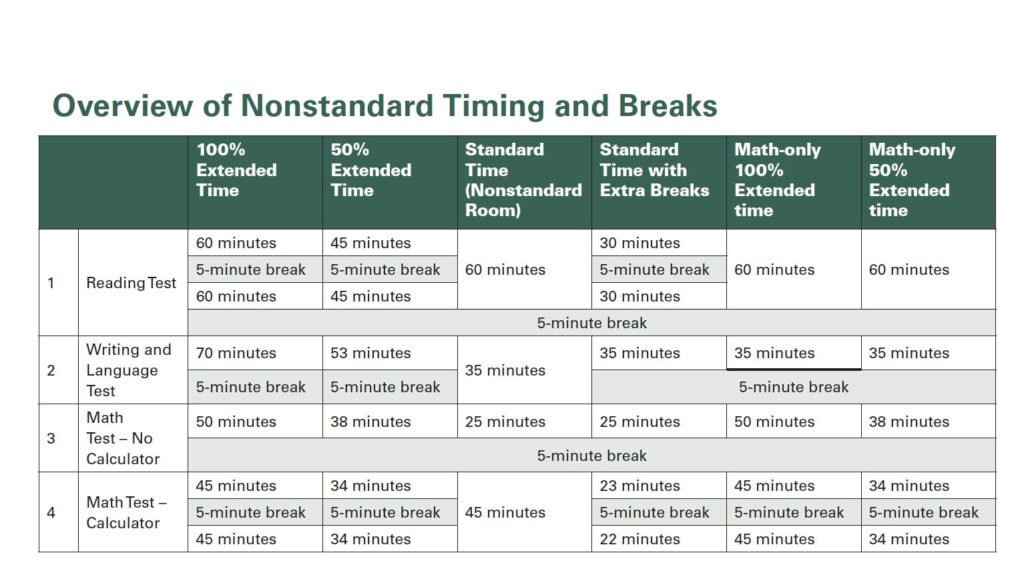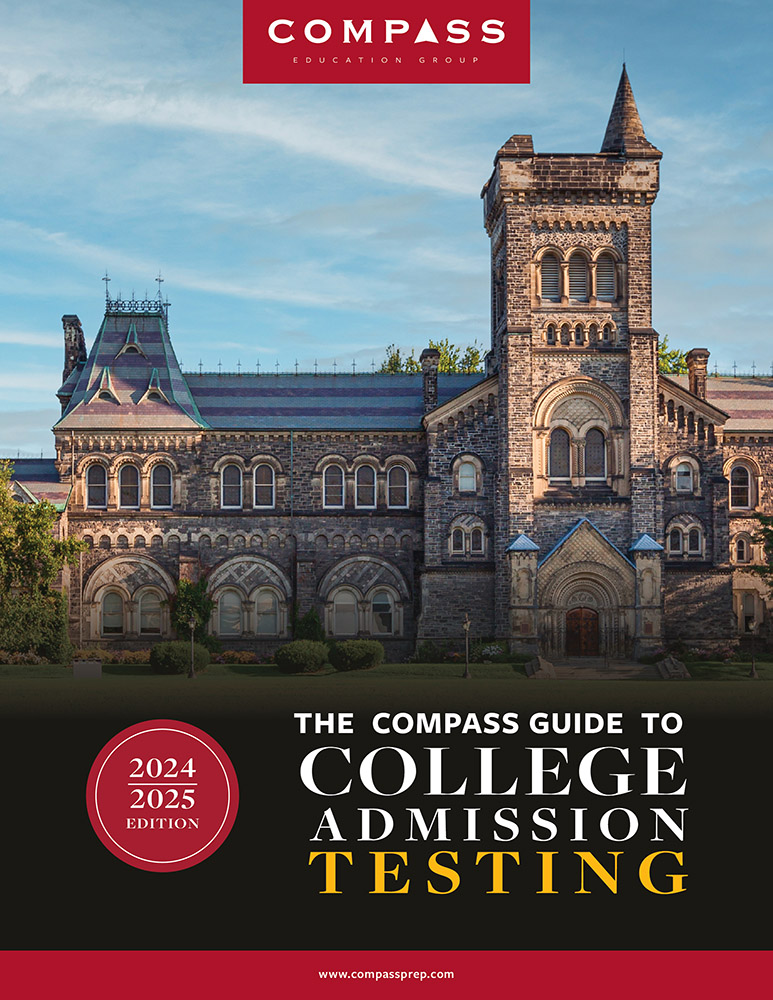
Click Each Question Below to Reveal an Expanded Answer:
Why should I take the PSAT?
There are several common reasons students take the PSAT.
- Your high school requires it. This makes your decision easy. Talk to your counselor if you are unable to test.
- You want to enter the National Merit Scholarship Program or one of College Board’s recognition programs. The junior PSAT/NMSQT is the entrance exam for the National Merit program.
- You want to connect with colleges via the Student Search Service. One of the lesser known benefits of the PSAT is that it serves as something of a matching service between colleges and students. PSAT registrants can opt in to the Student Search Service. Colleges can then purchase lists from College Board filtered by interests and test scores. The SSS serves as a useful way for colleges to reach out to students. In a world of internet marketing and social media, though, there are more than enough ways for students and colleges to connect.
- You want realistic practice for the SAT. The October test can serve as a useful rehearsal for the SAT. On the other hand, we think students should pass on the January PSAT unless they are hoping to qualify for National Merit. January PSAT scores will not be available until late February at the earliest and come too late for students to plan for the spring ACT and SAT dates. Taking a practice SAT with Compass can be just as useful as the PSAT and scores can be available within days. You may also want to take a mock ACT so that you can make a testing plan that plays to your strengths.
When is the PSAT offered? Do I have to register for it?
The PSAT is offered on three dates: a primary test date, a Saturday test date, and an alternate test date.
- Wednesday, October 13th
- Saturday, October 16th
- Tuesday, October 26th
At most schools, no pre-registration is required. You will fill out a registration sheet as part of the test. It’s a good idea to create a College Board account and make sure to use the same address and name spelling on your PSAT and account so that they can match you to your scores.
Can I choose which date to take?
No. Your school will determine if it will offer the PSAT and on which date(s) the test will be given.
What if my school has cancelled the PSAT entirely?
You can take a practice PSAT or SAT that can provide as much information as the PSAT. Students looking to qualify for National Merit may have alternatives.
Do colleges see the PSAT score?
No. PSAT scores are not sent to colleges, but your high school counselors can see a schoolwide report that does include your scores. Depending on how you fill out the PSAT registration information, colleges may send you promotional literature based on your approximate score range. This information is not used for admission purposes.*
*COVID-19 has created some unprecedented circumstances. Some colleges — like West Point — have said that the class of 2022 may submit PSAT scores for admission consideration. It’s unlikely that these policies will continue for future years.
What is the difference between the PSAT and SAT?
The PSAT is designed to give you and your counselors a sense of your performance for guidance purposes. No college will ever see these scores.
The PSAT is a shorter, and slightly easier, version of the SAT. Unlike the SAT, the PSAT does not have an essay component. Otherwise, the structure and length of the sections is nearly identical. The easier content means that the top score on the PSAT is slightly lower than that of the SAT. Both tests occupy different spaces on the same score scale—each SAT section is scored on a range of 200–800 while each PSAT section is scored on a range of 160–760 (see below). Otherwise, the scores are considered comparable. For example, a student scoring 600 on the PSAT Math section would—if testing at the same time—be likely to score a 600 on the SAT Math section.
How long does it take?
The PSAT clocks in at a tight 2 hours and 45 minutes, but with breaks and time to fill out the registration form and questionnaire at the beginning of the test, your session could extend an hour or more.
If you receive testing accommodations, the length will depend on the specifics of your testing plan. Review the chart below for the various timing and breaks.

When do scores come back? How do I get my scores?
Scores come back in December. Your counselors will have access to scores first and may have a schedule for distributing results. If your name, address, and other identifying information you filled out when taking the PSAT match what you entered into your College Board account, you’ll find your detailed score report waiting for you about a week after schools are notified!
If not, you can follow the instructions in this handy PDF.
Why is the highest section score 760? Why is the top total score 1520?
This explanation is grounded on College Board’s commitment to increasing the visibility of students’ college readiness.
The PSAT is part of a broader College Board initiative. At one end, the SAT anchors a vertically aligned assessment system that includes the PAST 8/9 for 8th and 9th graders, PSAT 10 for 10th graders, and PSAT/NMSQT for 11th graders (and, optionally, for 10th graders).
These tests are built upon a single empirical backbone, so as students advance through high school, the scope and difficulty of the tests increase accordingly. The suite of assessments contains different tests for students at different stages of academic development, but the tests share one continuous scale (120–800).

Because lower-level tests focus on earlier concepts, they are limited to lower bands of the full scale. The SAT tests higher concepts, so its maximum potential score is higher.
The key is that this scale represents a student’s score “now,” indicating a likely SAT score if it had been taken instead of the PSAT on that day.
Can you compare PSAT scores to ACT?
You can! Because the PSAT and SAT are located on the same scale, and because College Board has provided concordance tables to compare SAT and ACT scores, you can use our tables and graph to compare scores to see if you should favor one test.
Whats a good score?
It depends on what you mean by good.
For some, a score that gives them the most information about their potential options is a good one. For others, a good score is only one that will qualify them for National Merit recognition.
One thing that can be helpful is to look at the User Percentiles that appear on your online score report. The percentile ranks represent the percentage of students at or below your score. These percentiles can help you see where you stand in relation to other students taking the exam who intend to apply to college.
Your score report will also include Nationally Representative Sample percentiles based on the hypothetical case of every student in the U.S. taking the PSAT. We recommend the User Percentiles as more representative because they consider all of the students who took the PSAT in the previous year.
It may also be helpful to look at the profiles of colleges where you think you may apply. We have listed 360 popular colleges along with the mid-range (25th–75th percentile) SAT and ACT scores of their freshman class. Keep in mind that most students will improve between sophomore and junior year and between the PSAT and SAT.
How is the National Merit Selection Index calculated?
The easiest way to calculate your National Merit Selection index is to double your Reading and Writing score, add your math score, and drop a 0.
For example:
Reading and Writing 710; Math 690
(710 x 2) + 690 = 2110
Drop the 0
211 = Selection Index
Should we study for the PSAT?
Some students find it helpful to prepare for the PSAT so it’s familiar the day of the test. Those who suffer from test anxiety often report that practicing the material and question style in advance can help reduce stress on the day of the exam.
We rarely recommend extensive prep just for the PSAT. More often, any preparation is viewed as a foundation for further prep for the full SAT later in the winter or in the spring.
If sophomore or practice PSAT scores suggest that you may be in contention for National Merit recognition, then more formal and extensive preparation can be a good investment.
Is there a difference between 10th- and 11th-grade tests?
Only juniors are eligible for National Merit recognition. When scores are returned, the college benchmarks listed on reports are grade-specific. But other than these two items, the tests and results are the same.
Are there additional PSAT resources available?
Compass has published a number of relevant articles about the PSAT, National Merit, and percentile scores. We also provide online and in-person practice tests and instruction.
Understanding Your PSAT Score Report
How to Compare PSAT and ACT Scores
Using Percentiles as a Benchmark
Please don’t hesitate to contact us for more information, personalized guidance, and practice tests.

